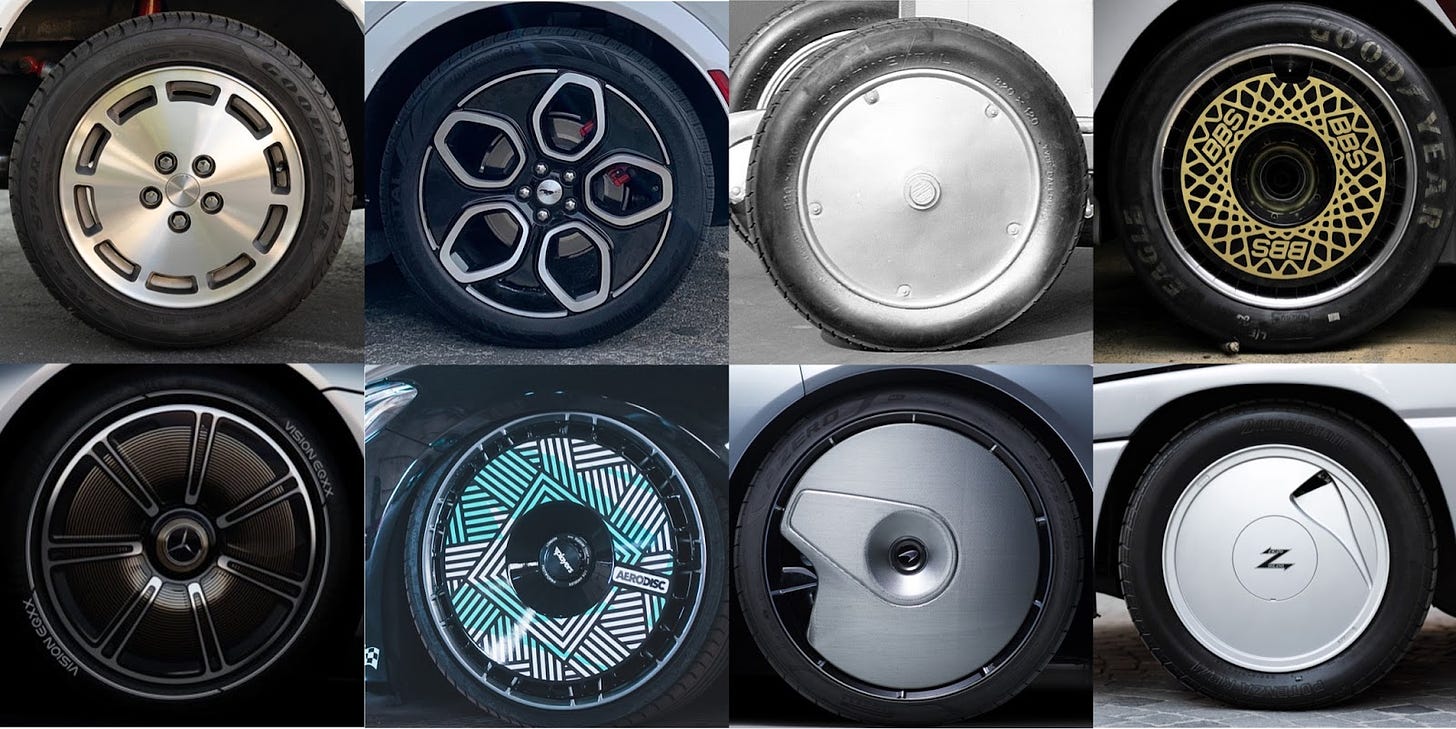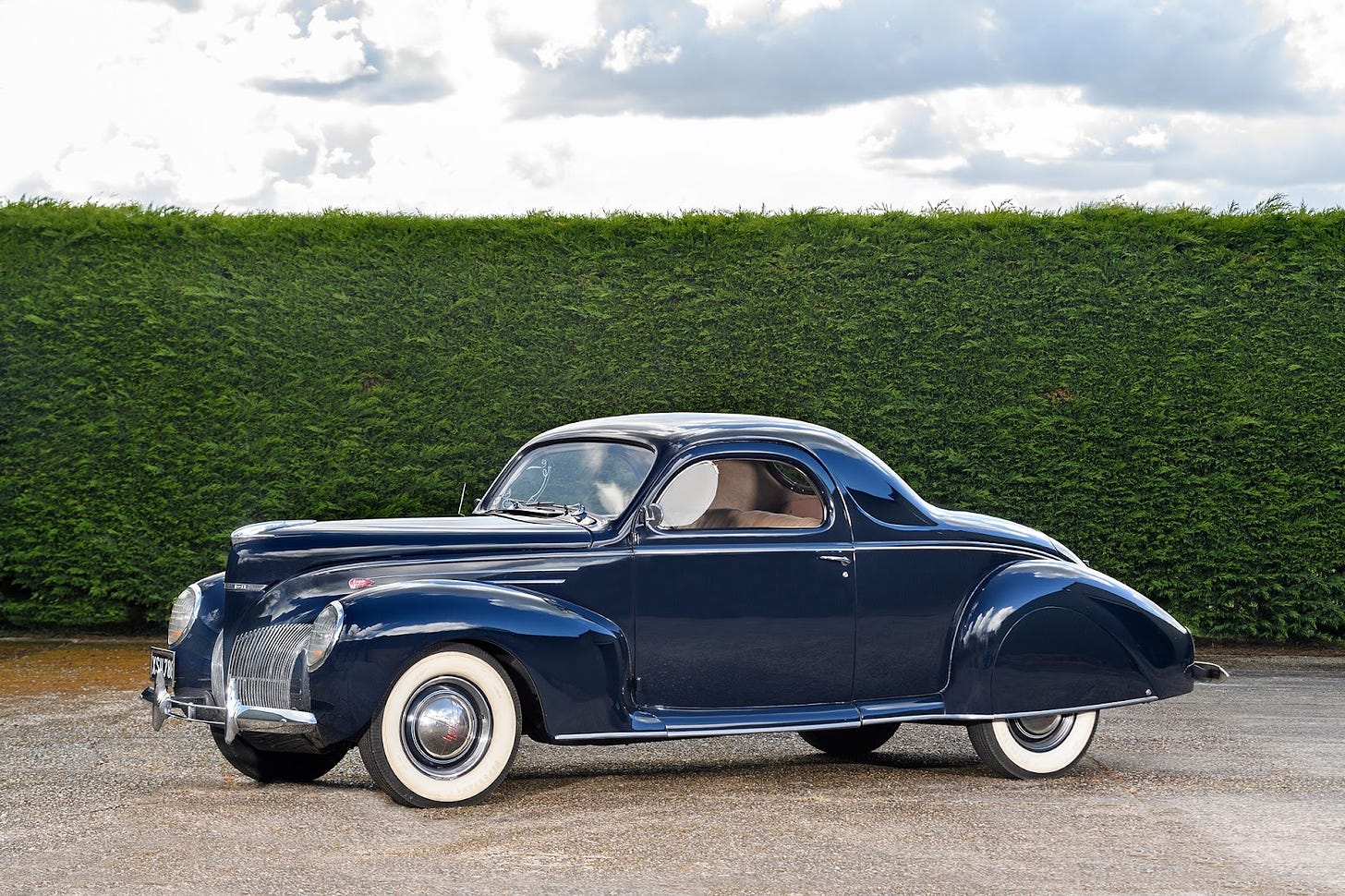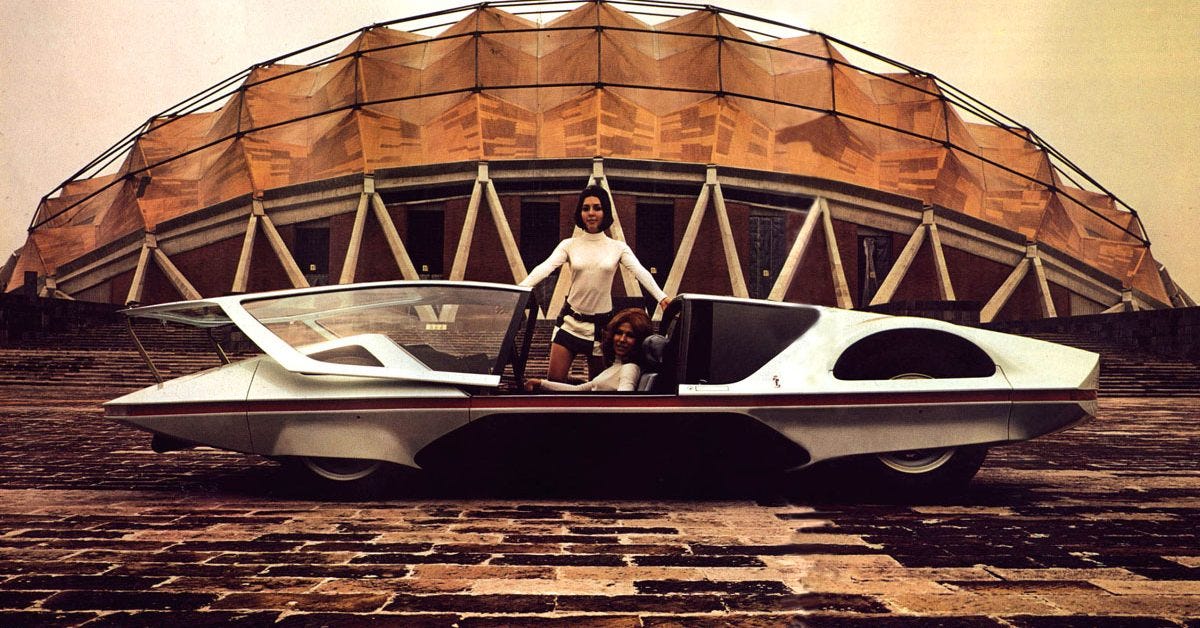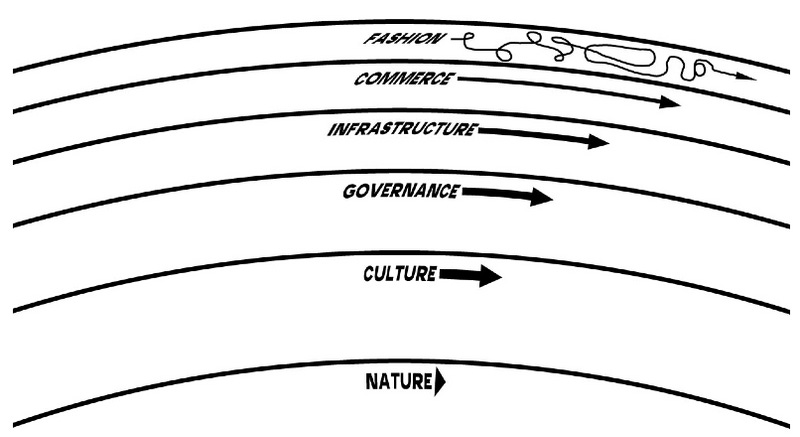Ryan McManus (RMM) is a product designer at Ford and a longstanding friend of WITI. He has previously written about the end of spare parts, the simple elegance of SecuriCode, and how to start your own town. He has never owned a gray car. Well, one—but he was young.
Ryan here. As electric vehicles (EVs) have begun to dominate the cultural awareness and proliferate the market, those who have paid close attention to each new model and concept’s release might have noticed a common design element that seems to occur, regardless of brand or vehicle type: a smooth, almost solid wheel design.
While not ubiquitous, this type of design, usually called “aero wheels,” are much more common on new EVs than gasoline-powered cars. The reason for this is fairly straightforward. Electric vehicles are, for better or worse, judged currently on a single metric: range (how far can the vehicle travel on a single charge). As Mazda has recently discovered, this number can make or break a car’s potential for success in the market, with a 200-300 mile range having become the standard for “good.” (Whether this is actually fair, or true, or if range is maybe not the best metric for a vehicle’s worth is the subject of another time.) For this reason, many considerations are made to reach an acceptable, “ideal” range for an EV. Batteries are heavy and expensive, so manufacturers look for other ways to eek out the miles.
A significant way to do that is to reduce the vehicle's coefficient of drag, colloquially known as “improving its aerodynamics.” There is a massive body of scientific research behind the complexities of road aerodynamics, but you can think of it simply as how easily a vehicle moves through the air. Motorcycle? Very aerodynamic, low drag. Hummer? Not so aerodynamic, higher drag. This means that between two roughly equally sized/mass vehicles, the one with the “better” aerodynamics (lower drag) will require less energy to go the same distance at the same speed. Now the picture for EVs becomes clear: to maximize range, you don’t just need a big battery and efficient motors—you also need optimized aerodynamics.
EV manufacturers do this in various ways, from creating the slipperiest possible silhouette to designing flush door handles and even shaping mirrors to minimize drag. And, yes, they also look to wheels.
WITI Classifieds:
We are experimenting with running some weekly classifieds in WITI. If you’re interested in running an ad, you can purchase one through this form. If you buy this week, we’ll throw an extra week in for free on any ad. If you have any questions, don’t hesitate to drop a line.
Coefficient Capital and The New Consumer have teamed up to bring you fresh new insights in F&B ahead of Expo West! Check out our comprehensive report
The BrXnd Marketing X AI Conference is happening on 5/16 in NYC. Early Bird tickets are 20% off until the end of the month. Get your 20% off ticket today!
Wheels, if you think of a typical spoked design, are actually aerodynamic nightmares. They contain edges and voids and spin at various rates, creating turbulence—the enemy of low drag. Aero wheels, then, seek to calm this turbulence through a solid, smooth design that minimizes the air passing over them getting caught up in the motion of the wheel, thereby decreasing the amount of energy needed to push that car through space. Simple.
Why is this interesting?
The thing is, aerodynamics are not an EV-specific concern—they are an energy conservation one, one defined not by chemistry but physics. Vehicles powered by gas or diesel motors face the same challenges with regards to the amount of energy required to overcome their drag, so why wouldn’t their design be driven as ruthlessly by aerodynamic optimization? Or, to put it in the context of this WITI, the question isn’t why do EVs have aero wheels, but why doesn’t every car have aero wheels?
The answer lies in the interdynamics of humanity's relationship to energy conservation and to fashion, and the points in history where the two have been aligned (and opposed).
So, first: EVs did not invent the aero wheel. Actually, aero wheels are a fairly old concept, with the first ones emerging in racing as far back as 1903, when the understanding of the impact of aerodynamics on automotive design started to take root. (Before then, the need for a low drag was mitigated by the top speed of a horse. Not much impact there). The 1921 Rumpler Tropfenwagen (with an incredible .28 drag coefficient comparable to a Tesla Model S) had aero wheel covers that wouldn’t look out of place on a modern EV concept today:
In the 1930s, as aerodynamics became fashion and “streamlining” ruled the vernacular of the day, again we see the reemergence of the aero wheel idea, going so far as to include “wheel spats”, body covers across the rear wheels to improve airflow (and aesthetics).
Again in the 1970s and 1980s, as gas prices increased and environmental awareness grew, we see aero wheel and car designs again dominating first the concept cars and then the production cars of the day, finding new ways to create expressive forms while signaling good aerodynamics, in principle. Once again, ‘aero’ became synonymous with ‘futuristic.’
That last bit is important, because this is where the fashion part of the relational dyad comes into play. Automobile wheels are actually a highly expressive and extremely fashion-driven part of the car’s design language. Think of them as the sneakers of the car—because they are decorative by nature, and because changing wheel designs from year to year is far less expensive than changing the shape of the car, the metabolic rate of change in wheel designs tends towards the outer pace layers rather than the slower, more industry driven ones. And, like any of us, aero wheels are not immune to the forces of fashion, the cultural vibe shifts we all must endure.
An industrious person could likely then look back at the points in the last 100 years when energy efficiency and conservation were at the height of collective consciousness (1920s-30s, 1970s-80s, 1990s-00s, 2020-today) and find that the occurrence of aero wheel designs to emerge shortly after those crests, only to disappear again in the trenches of time between—where they move from a vision of the future, to a dominant style, to a passé look cast aside for something a bit flashier. As EVs become more and more mainstream, as energy becomes cheaper and more abundant, and as battery technologies begin to free us from the tyranny of range optimization as a metric of a “good ev,” we can expect to see the dominance of the aero wheel to once again recede into obscurity. (RMM)
—
Thanks for reading,
Noah (NRB) & Colin (CJN) & Ryan (RMM)
—
Why is this interesting? is a daily email from Noah Brier & Colin Nagy (and friends!) about interesting things. If you’ve enjoyed this edition, please consider forwarding it to a friend. If you’re reading it for the first time, consider subscribing.











I say bring back wheel spats, and add tail fins while we’re at it!
A $60,000 Tesla has $35 wheel covers. I don't know why that fascinates me, but it does.